This article was medically reviewed by Luba Lee, FNP-BC, MS and by wikiHow staff writer, Danielle Blinka, MA, MPA. Luba Lee, FNP-BC is a Board-Certified Family Nurse Practitioner (FNP) and educator in Tennessee with over a decade of clinical experience. Luba has certifications in Pediatric Advanced Life Support (PALS), Emergency Medicine, Advanced Cardiac Life Support (ACLS), Team Building, and Critical Care Nursing. She received her Master of Science in Nursing (MSN) from the University of Tennessee in 2006.
There are 10 references cited in this article, which can be found at the bottom of the page.
This article has been viewed 32,545 times.
Hypertrophic scars occur when trauma damages your skin, such as with a burn. They often appear as raised, hard, red or pink scar tissue that doesn’t spread to the rest of your skin. In many cases, the scar will improve on its own.[1] If you don’t like the look of your hypertrophic scar, you can try treatments to help it heal faster. Home treatments can help your scar heal if it’s recent, but you may need to seek medical treatment for older or stubborn scars.
Steps
Using Home Treatments
-
1Apply a silicone gel or mask. Silicone gel masks are a common, safe and effective treatment for hypertrophic scars. You can buy sheeting masks or gel over-the-counter at a drug store or online, or you can purchase it from your dermatologist. Carefully follow the instructions on the packaging or those provided by your doctor.[2]
- To use the mask, apply it over your scar and make sure it stays in place. This may not be the best option for highly visible scars, people with allergies to the tape that holds the mask in place, or people who sweat a lot.
- Fortunately, silicone gel is available for people who cannot wear the mask, and it’s just as effective! However, you will need to remember to reapply the gel throughout the day. It will dry clear, so no one will know you’re wearing it.[3]
- Silicone treatments are most often applied for 23 hours a day during the first year after the scar begins to develop.
-
2Use a scar gel that contains onion extract. Onion extract prevents scar development and improves the look of scars by limiting inflammation and the growth of cells that create collagen, which are called fibroblasts. It’s most effective on new scars.[4]
- You can find gels that contain onion extract over-the-counter or purchase them through your dermatologist.
- Mederma, a scar gel that is commonly available over-the-counter, is a blend that contains onion extract. It has several generic forms, though you should check the ingredients to make sure the 1 you are buying contains onion extract.[5]
Advertisement -
3Avoid the use of treatments that contain vitamin E. Although vitamin E can improve some skin issues, it’s not very effective against hypertrophic scars. Instead, it can weaken your skin or cause skin irritation, which actually makes it take longer to heal.[6]
- Check the label to make sure the products you choose don’t include vitamin E as an ingredient.
- When in doubt, ask your doctor if the product you want to use is right for you.
-
4Disguise your scar with camouflage makeup. The look of your hypertrophic scar will improve over time on its own, though the time it takes can vary across individuals. While your scar heals, you can use skin camouflage makeup to cover it. This is a very effective way to hide your scar.[7]
- You can use a regular concealer that matches your skin tone along with a makeup setting powder or a scar camouflage kit with a paste and powder, which is available at drugstores or online. Apply enough concealer or camouflage paste over your scar to cover it, then use a makeup brush to blend it into your skin. Allow 1-2 minutes for it to dry, then brush the powder over it.
- You can pair makeup with other early treatments, such as using scar gel. Just let your treatment dry before you apply the makeup.
- Makeup is most often used on scars that appear in highly visible areas, such as on your face. However, remember that your scar does not define you, and it's okay to leave your scar uncovered.
Seeking Medical Treatment
-
1Get corticosteroid injections if topical treatments aren’t effective. If other treatments don't work, you can try corticosteroid injections, if your doctor approves them. For them to work, you'll need to receive injections once or twice a month until your scar heals. Corticosteroids can reduce the size of your scars by lowering inflammation, decreasing the amount of collagen in the scars, and limiting fibroblasts. However, they can cause pain and side effects, so your doctor will likely want you to try other treatments first.[8]
- Your doctor may administer a pain treatment, such as lidocaine, at the same time as your injection.
- You may experience side effects, such as skin hypopigmentation, skin atrophy, subcutaneous fat atrophy, and spider veins.[9]
-
2Undergo bleomycin treatment as an alternative for corticosteroids. Bleomycin is an off-label treatment for hypertrophic scars that can be very effective. In addition to improving the look of scars, it may improve the pain or discomfort that some patients feel. Your doctor can determine if it's the right option for you.[10]
- You may experience some side effects from bleomycin, such as skin hyperpigmentation and dermal atrophy around the administration site.[11]
-
3Use compression garments under your doctor’s supervision. Compression garments can help improve more widespread hypertrophic scars in some patients, most likely by limiting the development of the collagen that causes the scars. However, they’re not effective for all patients. Your doctor can determine if they’re right for you.[12]
- You may be prescribed compression garments if you’ve had a deep dermal wound or have received a skin graft. The doctor may also prescribe a compression garment if your skin is dark.
- Compression garments are only recommended for parts of the body where the garments can be safely applied, such as on your limbs.[13]
- Compression garments are most often used for patients who’ve experienced burns.
-
4Try massage therapy. Massage therapy is a non-intrusive method that can help heal hypertrophic scars. Use moisturizing lotions or creams on the affected area to help relieve it.[14]
-
5Consult with your doctor about using cryosurgery, radiotherapy, or laser treatment. If you want to heal or remove hypertrophic scars, consider a surgical option to manage the tissue. Talk to your doctor to see if surgery is right for you.[15]
- Cryosurgery uses intense cold to remove unwanted tissue.
- Radiotherapy uses radiation to control or kill the skin cells.
- Laser therapy uses a low-level laser to promote tissue regeneration.
-
6Consider surgery only if the scar limits your ability to move. Surgery is usually only recommended if your scar is near a joint, such as your elbow or knee. In most cases, the doctor will need to apply skin grafts to the area affected by the scar in order for it to heal.[16]
- Your doctor will decide if surgery is the best option for you. If your scar does not limit your movement, it will most likely heal better without surgery.[17]
Warnings
- Most of the treatments for hypertrophic scars come with side effects. If your scar is not negatively impacting your life, it’s often best to allow it to improve on its own time.⧼thumbs_response⧽
References
- ↑ https://www.ncbi.nlm.nih.gov/pmc/articles/PMC4129552/
- ↑ https://my.clevelandclinic.org/health/diseases/21466-hypertrophic-scar
- ↑ https://www.ncbi.nlm.nih.gov/pmc/articles/PMC2918339/
- ↑ https://pubmed.ncbi.nlm.nih.gov/17722521/
- ↑ https://www.drugs.com/drp/mederma-gel.html
- ↑ https://www.aafp.org/afp/2009/0801/p253.html
- ↑ https://www.nhs.uk/conditions/scars/
- ↑ https://www.aafp.org/afp/2009/0801/p253.html
- ↑ https://www.ncbi.nlm.nih.gov/pmc/articles/PMC4129552/
- ↑ https://onlinelibrary.wiley.com/doi/10.1111/j.1473-2165.2008.00360.x
- ↑ https://www.ncbi.nlm.nih.gov/pmc/articles/PMC4129552/
- ↑ https://emedicine.medscape.com/article/1057599-treatment#d9
- ↑ https://www.ncbi.nlm.nih.gov/pmc/articles/PMC4129552/
- ↑ https://www.ncbi.nlm.nih.gov/pmc/articles/PMC4186912/
- ↑ https://www.ncbi.nlm.nih.gov/pmc/articles/PMC4186912/
- ↑ https://www.ncbi.nlm.nih.gov/pmc/articles/PMC4186912/
- ↑ https://www.ncbi.nlm.nih.gov/pmc/articles/PMC4129552/
- ↑ https://www.ncbi.nlm.nih.gov/pmc/articles/PMC4129552/

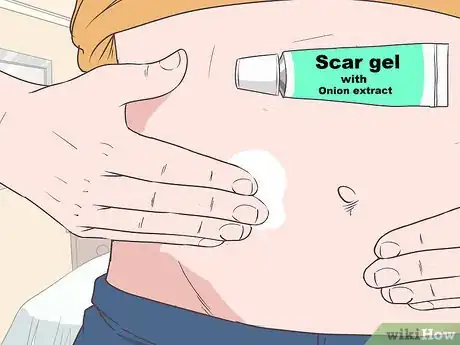
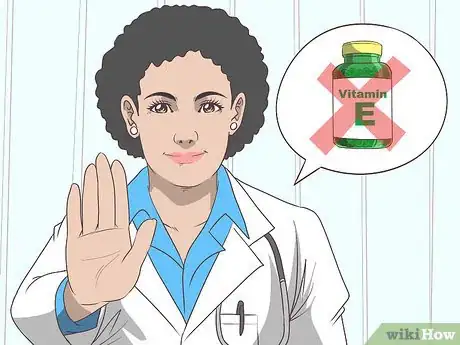

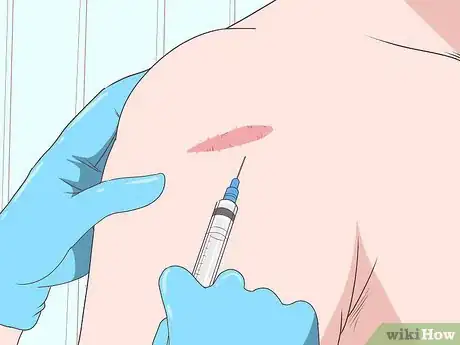
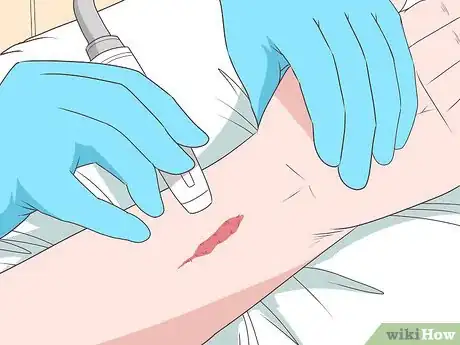


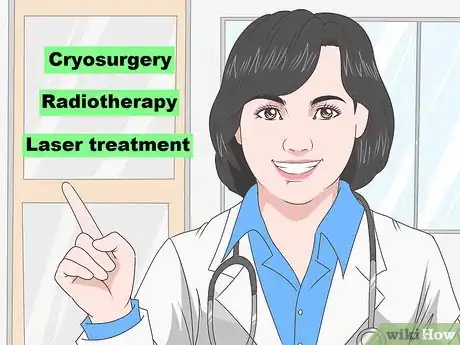
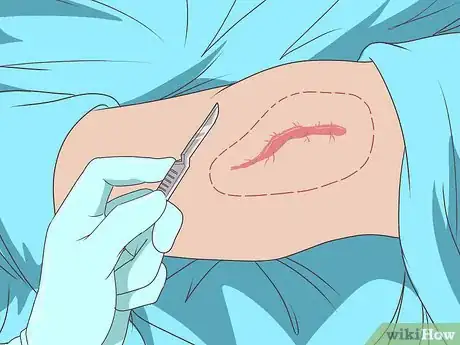


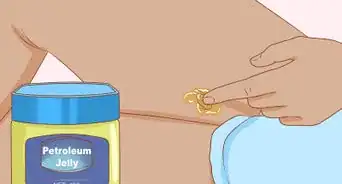

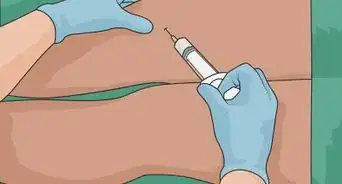

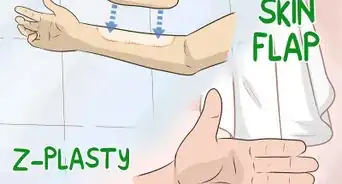




















































Medical Disclaimer
The content of this article is not intended to be a substitute for professional medical advice, examination, diagnosis, or treatment. You should always contact your doctor or other qualified healthcare professional before starting, changing, or stopping any kind of health treatment.
Read More...